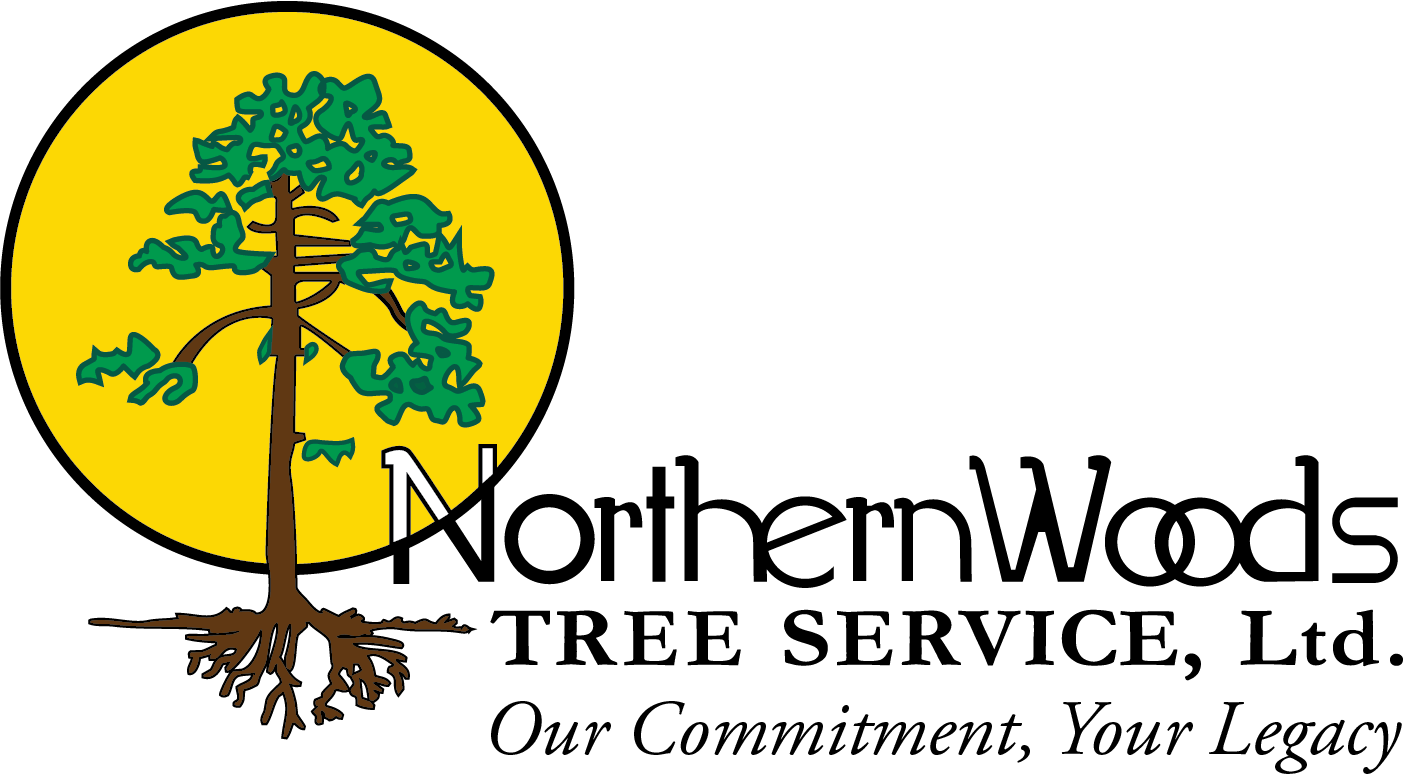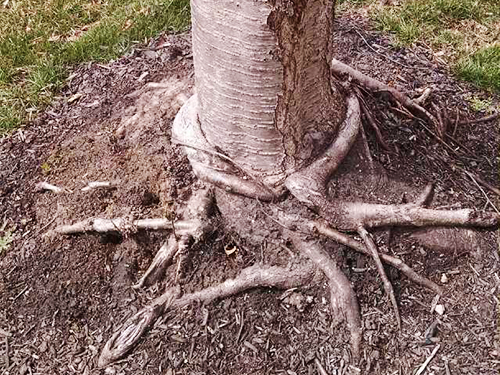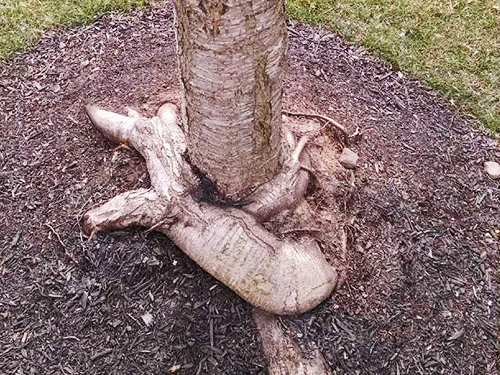Roots are the vital subsurface organs of the tree. They provide an avenue for transporting life sustaining nutrients that are essential to the growth and healthy development of trees. Roots also act as the major mechanism for anchoring the tree into the ground thus providing structural stability to the increasingly heavy trunk and canopy as it grows. Root decay is a problem that can lead to major health issues and structural failure. These issues can be expressed as abnormalities in the leaves, limb die-back, premature fracturing, uprooting, and ultimately in the death of the entire tree.
Since most of the root system is underground and consequently cannot be seen, developing problems are often overlooked or not given enough attention. Our arborists understand the dynamics of how roots grow and function, what causes decay, and how best to handle root issues to protect them and keep them healthy so the tree can grow and flourish.
Major contributors to root problems:
A. Construction damage: Trees donít like change. They are living organisms that exist in a finite equilibrium with their surrounding environment. When that environment changes, they cannot get up and move to a more favorable locationÖthey either adapt or die. Roots are very sensitive to changes in soil conditions and, in particular, the availability of two life-essential elements; water and oxygen. Re-sculpting the soil can significantly alter the availability of these elements by reducing or increasing the flow of water over the treeís root system. This change often leads to unhealthy moisture levels due to either deprivation (water is deflected or prevented from entering onto the root system) or suffocation due to saturation (too much water funneled onto the root system). Heavy vehicle and foot traffic over the root system during construction also has a deleterious effect due to compaction of soil particles, which reduces the percolation of these elements into the roots.
B. Mulching: Mulching can be beneficial or problematic.
Benefits:
1. Helps retain moisture and reduces evaporation during periods of drought.
2. Insulates the roots from freezing conditions in the winter.
3. Protects the root crown (point where the trunk enters the soil) from mechanical damage from lawn mowers, weedeaters, etc.
Problems:
1. Excess mulching can cause retention of too much moisture and thereby increase fungal and bacterial growth.
2. Excess mulch at the base of the tree (root crown) retains moisture on the trunk, prevents oxygen exchange, and causes fungal and bacterial growth and insect problems.
3. Excess mulch near the trunk will encourage roots to grow up into the moist, less dense mulch instead of deeper into the soil, which is more desirable and will provide better stability for the tree in future years.
C. Girdling problems: Girdling is a condition caused by constriction of the cells in the treeís outermost tissues. The vascular system of a tree is located just beneath the bark. Like bundles of streams, this system transports essential nutrients between the root system and crown (canopy). Constriction of these cells has a ìtourniquetî effect in that it slows down and can eventually cut off the supply of those nutrients to the needed parts of the tree. Some of the causes of girdling are:
1. Roots that wrap around the base of a tree rather than growing tangent to, or away from, the trunk. The encircling root(s) and trunk put pressure on one another as both attempt to grow in diameter from cell generation in the cambium layer. Thus compression results and a reduction in flow of nutrients through those cells occurs.
2. Keeping young trees in a confined container too long before transplanting. The developing roots will deflect off the container and begin to encircle the plant thus starting the process described in the previous paragraph.
3. Note: although not a root problem, wrapping a wire, chain, or other non-stretch material around a tree trunk or limb also causes a girdling problem. As the tree or limb grows and increases in diameter, the static material constricts the vascular cells and shuts down the movement of elements through the tree.



